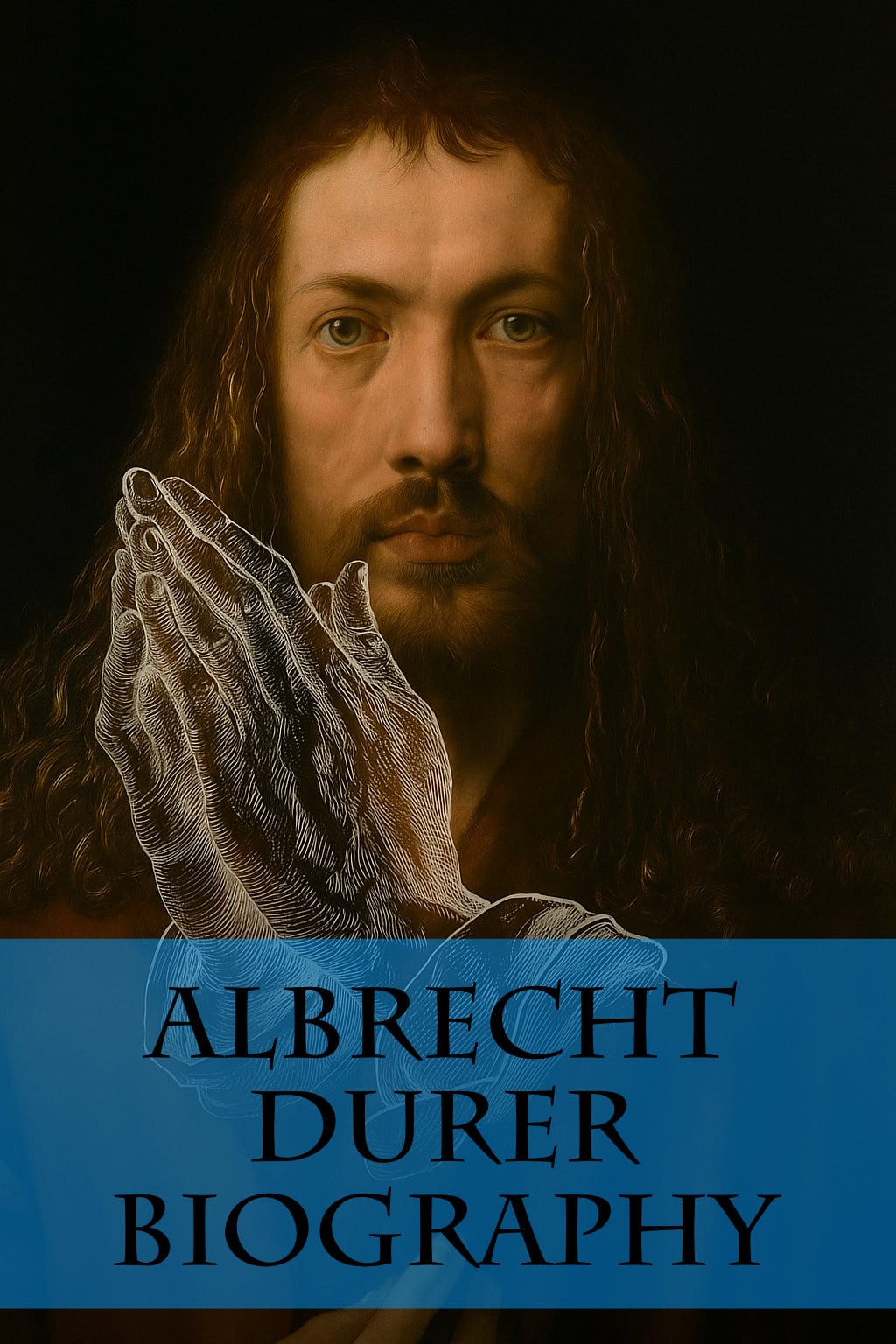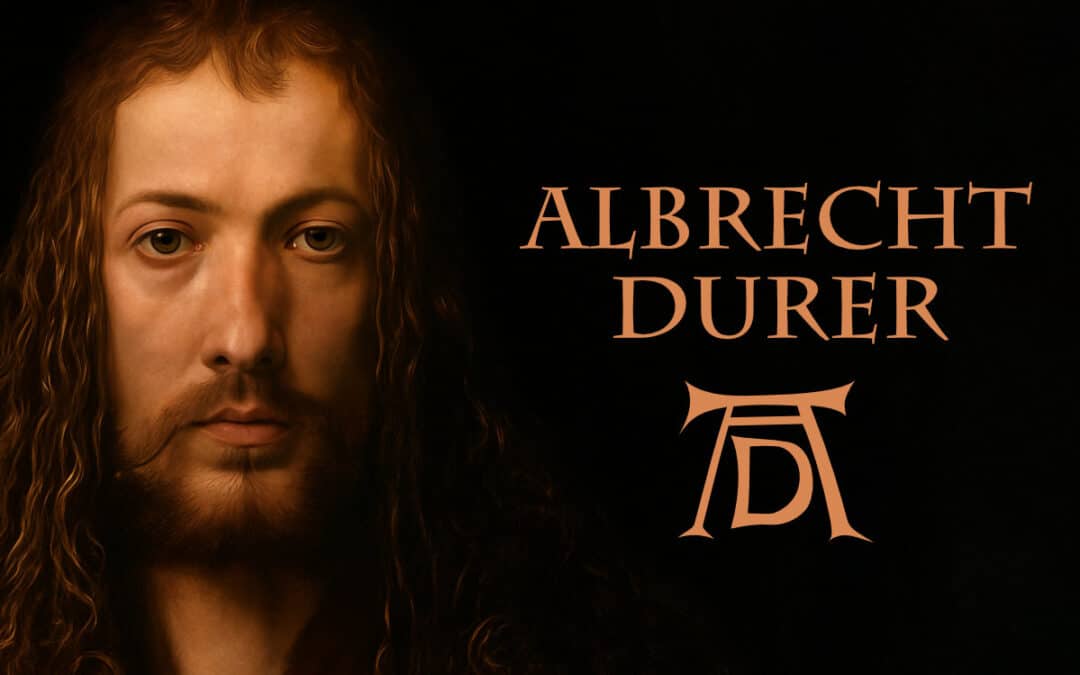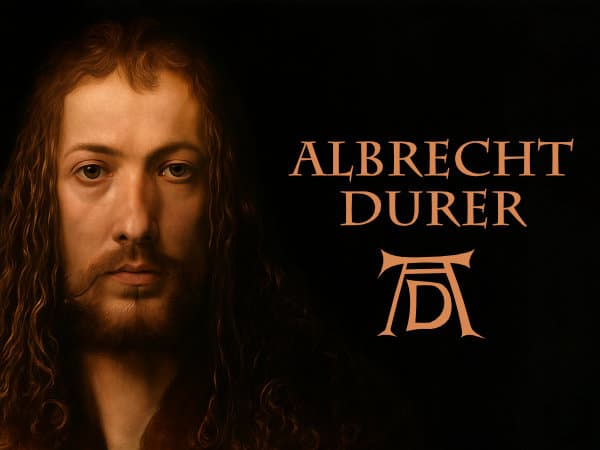
As I grew older, I realized that it was much better to insist on the genuine forms of nature, for simplicity is the greatest adornment of art.
Albrecht Durer was born on 21 May 1471. He was the third of eighteen children and the second son of Albrecht Durer Snr., a successful goldsmith, and Barbara Holper. Durer is regarded as one of Germany’s most gifted artists and a leading figure of the Northern Renaissance. He produced oil paintings, watercolours, ink drawings and engravings, and he also wrote about engineering, architecture and geometry.
Because he wrote extensively about himself, and became widely known by his mid-twenties, a great deal is known about his life. His father originally wanted him to follow the family trade as a goldsmith and trained him as an apprentice. Durer’s exceptional talent in drawing soon became obvious, and at the age of fifteen he began a second apprenticeship with the painter Michael Wolgemut who was the leading artist in Nuremberg at the time. Under Wolgemut, he learned painting, woodcarving and copper engraving. Wolgemut specialised in artistic woodcuts for books, a field that strongly influenced Durer’s early work.
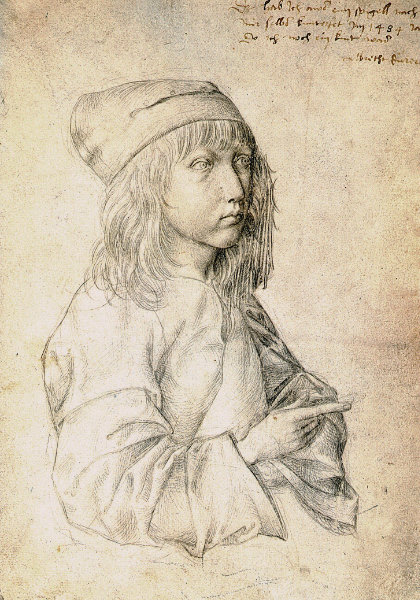
At the age of thirteen, Durer created a silverpoint self-portrait titled “When I was a Child”. Silverpoint is a technique that uses a silver wire on a gesso-prepared surface. The self-portrait shows a remarkable level of self-awareness for someone so young.
Durer’s early exposure to woodcutting and printing shaped his future. He went on to specialise in printmaking and pushed the medium to new heights.
In 1490, after completing his apprenticeships, he set out on what was meant to be a one-year journey to study other artists and improve his engraving skills. The one year became four.
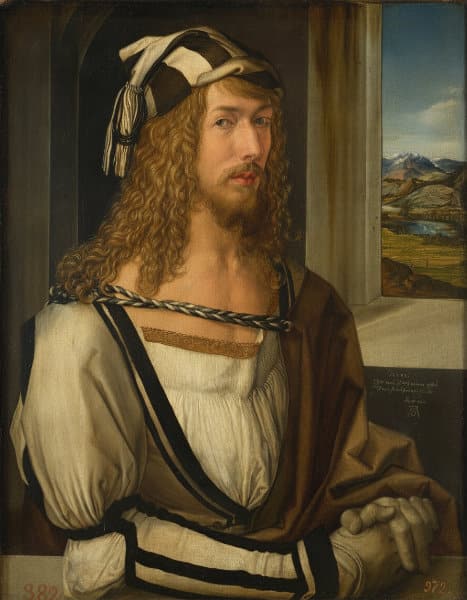
During this period he painted his first oil self-portrait at the age of twenty-nine. It became one of his most famous works. He painted himself facing directly toward the viewer which was unusual at the time because this pose was normally reserved for depictions of Christ. The sombre colours, symmetrical composition and the hand that appears to be giving a blessing all reflect the religious portrait conventions of that era.
Upon returning to Nuremberg in 1494, Durer married Agnes Frey, the daughter of a well-known brass worker. The marriage was arranged by their fathers. Although she was considered pretty, Durer knew very little about her before the wedding. They had no children and the marriage was unhappy. In letters, Durer referred to her as an “old crow”, and his friends described her as a “shrew”. Agnes was even blamed by some for contributing to his early death.
Only three months after the wedding, as plague spread through Nuremberg, Durer left on his own for Venice to continue his studies and experience Italy’s more advanced artistic world.
He returned to Nuremberg in 1495 and remained there for the next decade. The art of the Italian Renaissance had made a powerful impression on him. His work began to show techniques and sensibilities that differed greatly from traditional German woodcuts. During this time he studied nature, human anatomy, animals and still life subjects.
He wrote,
The one test of an artist’s conceptions is nature.
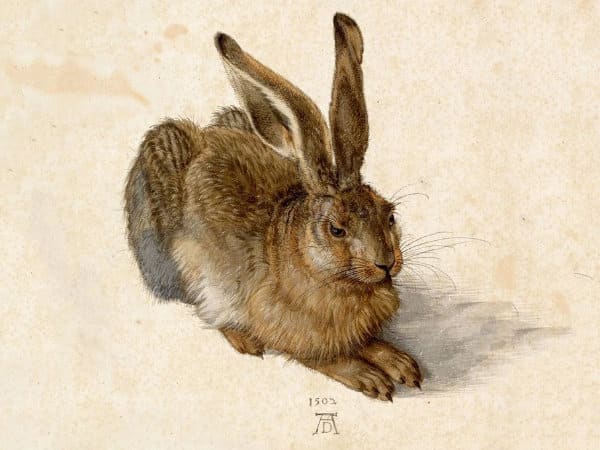
One of his most celebrated natural studies is the watercolour “Young Hare”, considered a masterpiece of observational art.
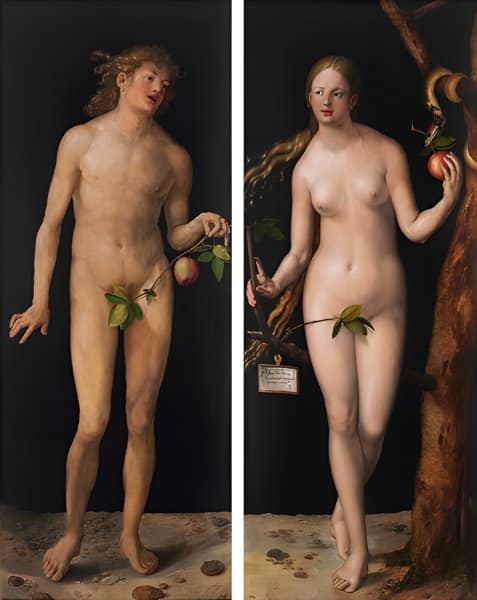
Between 1500 and 1504, Durer created several of his greatest works including “Adam and Eve”.
Woodcuts
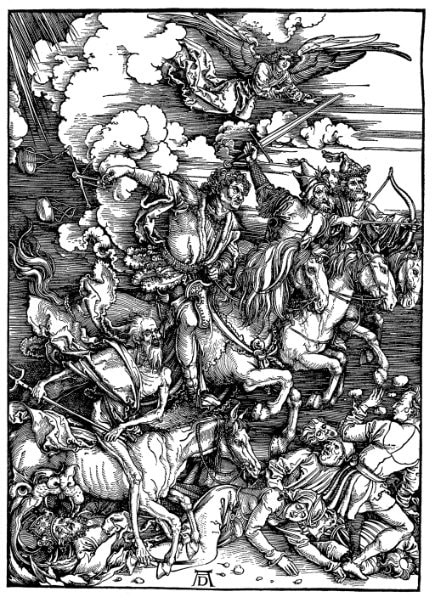
He also produced a series of fifteen large woodcuts called “The Apocalypse” between 1496 and 1498. The most famous of these is “The Four Horsemen”.
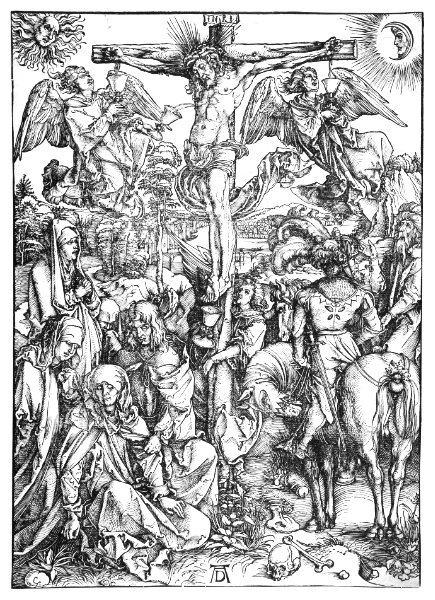
This was followed by “Great Passion”, a series of twelve woodcuts depicting scenes from the life of Jesus. These works display masterful contrasts of light and dark and demonstrate Durer’s deep understanding of human anatomy.
Above you can see “The Crucifixion” woodcut.
I have added a segment close up of this woddcut below give you an idea of the detail in these amazing artworks.
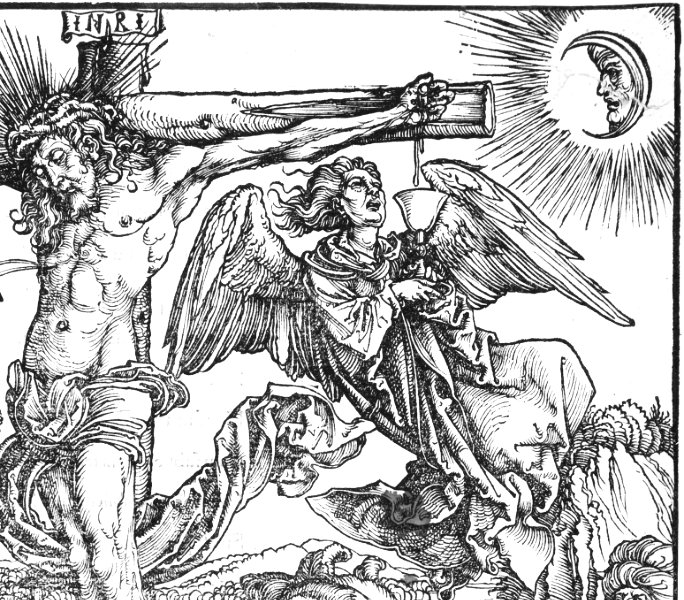
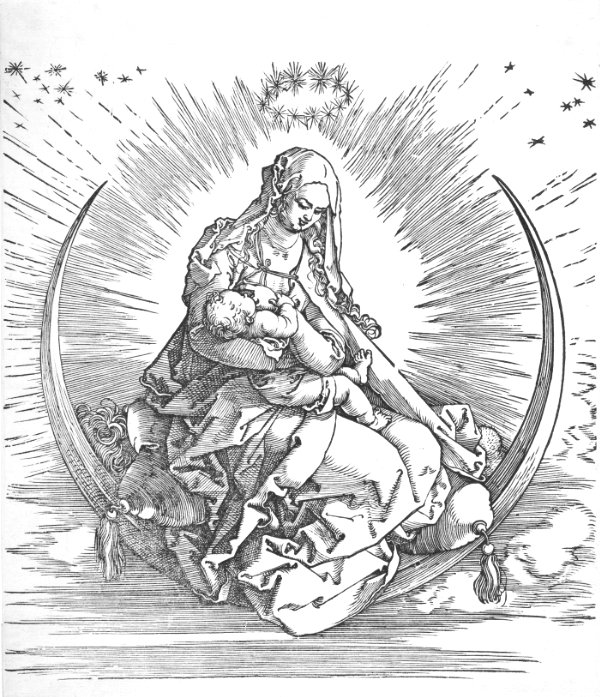
Durer also created a celebrated series of woodcuts known as the “Life of the Virgin”. This group of works follows key moments from the life of the Virgin Mary and is notable for combining delicate line work with rich narrative detail. He brought an extraordinary sense of movement and emotional depth to scenes that were traditionally depicted in a static manner. The series shows his growing mastery of composition and perspective, and it became one of the most admired devotional print cycles of the period.
Paintings and Altarpieces
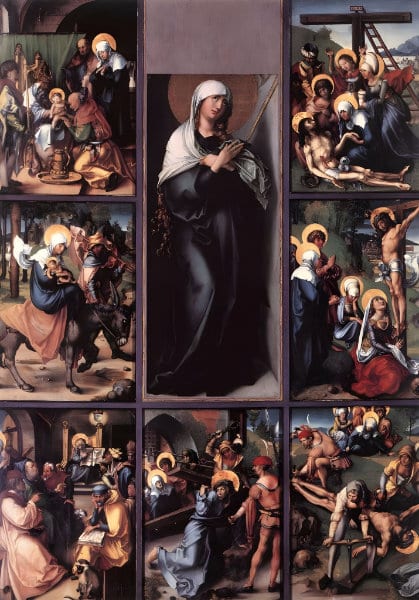
One of his important altarpieces is the “Seven Sorrows Polyptych”. It originally consisted of a central image surrounded by seven panels. It is believed that Durer painted only the central image while his students created the surrounding panels. The right half of the altarpiece, which showed the Seven Joys of the Virgin, has been lost. Only the left half, depicting the Seven Sorrows, survives. This work was produced in Durer’s newly established workshop.
In 1502, Durer’s father died, leaving very little money for his widow. Durer cared for his mother and took responsibility for teaching his younger brother Hans how to paint.
At the end of 1505, Durer travelled again to Venice. He hoped to study the great Italian masters more closely and to gain financial support from Venetian patrons. He was welcomed by the Venetian state and even offered a pension to remain there which angered some local painters. Durer feared they might try to poison him because of their resentment.
He planned to visit Bologna to study perspective. Whether he completed this trip is unknown.
Although he wrote, “Here I am a gentleman. At home, a parasite”, he reluctantly returned to Nuremberg in 1507. He was in high demand as a painter and completed “Adam and Eve”, which he had started in Venice.
On 17 May 1514, Durer lost his beloved mother after a long illness. He dealt with his grief by throwing himself into his work.
Six years later, he travelled to the Netherlands with Agnes and a maid. The journey was likely motivated by financial necessity. He needed certification from Emperor Charles V to confirm the pension originally granted by Emperor Maximilian. Agnes died six years later in 1520.
Durer was impressed by the wealth and sophistication he found in the Netherlands. He was warmly received by artists and welcomed in high society. He met Margaret, Regent of the Netherlands, and dined with King Christian II of Denmark. He made both charcoal and oil portraits of the king.
He eagerly sketched notable figures and produced cityscape drawings. Antwerp offered him a generous pension, a rent-free house and full exemption from taxes if he stayed. However, his deep attachment to Nuremberg led him to refuse the offers which reveals much about his character.
During this time, his homeland was being torn apart by religious conflict inspired by Martin Luther. Durer wrote to the authorities urging them to protect Luther for the sake of Christian truth which he described as “more important to us than all the power and riches of the world because all things pass away with time. Truth alone endures forever.”
Durer returned to Nuremberg in 1522 to find that the Reformation had changed the city significantly and not for the better.
These religious upheavals influenced his later works. He moved away from traditional Catholic subjects although he continued to depict scenes from the life of Christ. He also produced copper engravings of important figures and a portrait of his close friend Willibald Pirkheimer, a respected humanist and lawyer.
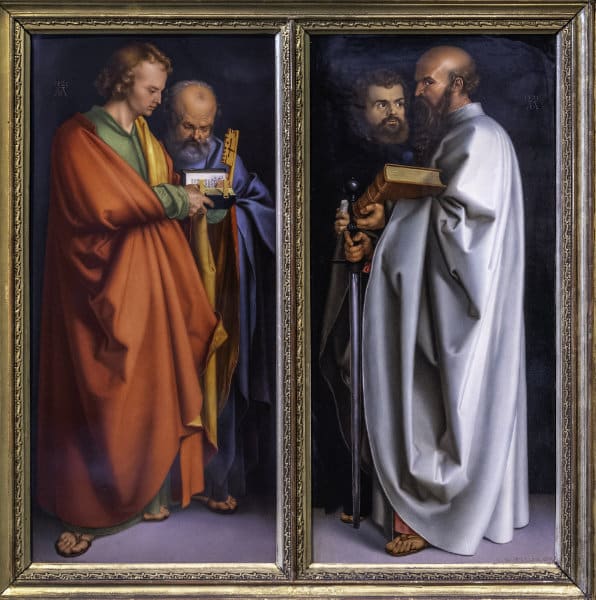
His final oil paintings were completed in 1526. His last great masterpiece was the “Four Apostles”, two painted panels that he presented as a gift to the Nuremberg City Council.
In 1527, he wrote a significant book titled “The Art of Fortification”. Earlier, in 1525, he had published “The Teaching of Measurements with Rule and Compass”. He had also been working on a four-volume study called “Human Proportions”. Only two volumes were ready at the time of his sudden death on 6 April 1528. He had contracted an unknown illness while in the Netherlands. His humility, brilliance and purity of spirit were widely mourned. Goethe later wrote,
In truth and nobility and even beauty and grace, Durer is equalled by only the very greatest Italian masters.
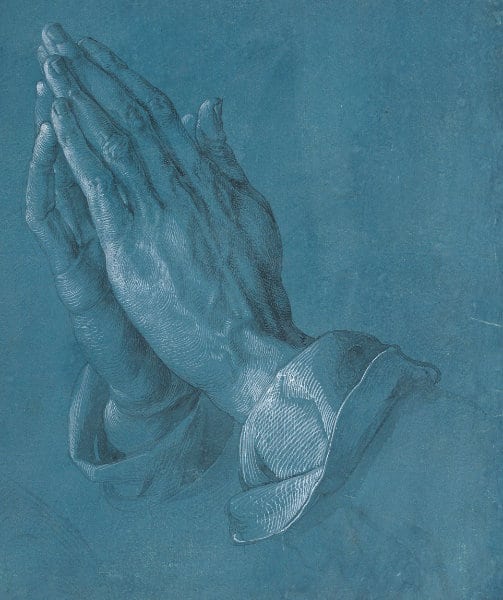
One of Durer’s most recognisable works is “Praying Hands”, an ink drawing on blue paper created as a study for an altarpiece that was later destroyed by fire. The drawing has become an international symbol of devotion and is one of the most reproduced images of all time.
Albrecht Durer’s Legacy
Durer transformed the art of printmaking, especially woodcut and copperplate engraving, and set new standards for precision and detail. His extraordinary observation skills and love of natural forms helped establish naturalism in Northern European art. He introduced accurate anatomical representation and influenced generations of artists.
His self-portraits explored identity and inner life in a way that had rarely been done before. His writings on geometry, perspective and human proportions helped spread artistic knowledge throughout Europe. His work bridged the Renaissance and the Reformation and captured the intellectual and spiritual shifts of his era.
Pin Me
